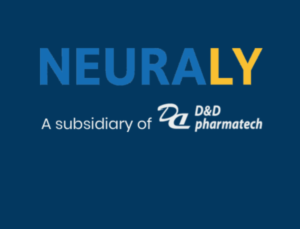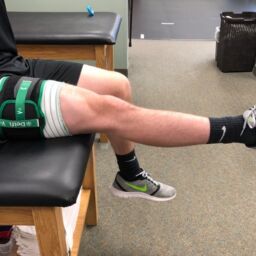(NOTE: An update about this study from March 27, 2023, is located at the end of this post.)
Three times in history, the stars aligned to create an environment in which a Parkinson’s breakthrough therapy was possible.
The first was in 1960, when scientists first realized that dopamine was linked to Parkinson’s — a realization that helped researchers discover how levodopa could treat symptoms.
The second was in the 1990s, when an understanding of the connectivity of motor control led to the realization that deep brain stimulation (DBS) could provide additional symptom control.
The third time might just be now.
Researchers are understanding better than ever the molecular pathogenesis of Parkinson’s. With this more thorough understanding, scientists around the world are working to develop realistic candidates to slow, stop, or even reverse the progression of Parkinson’s.
GLP1, Diabetes, and Parkinson’s
One of these candidates is NLY01, a pegylated form of exenatide. Exenatide, a GLP1 receptor agonist, is a widely used medication for diabetes. How does it help? GLP1 is a hormone produced in the small intestine that helps lower blood sugar levels; it stimulates insulin secretion and inhibits glucagon secretion. GLP1 receptor agonists, therefore, are commonly used to treat diabetes because of their ability to stabilize blood sugar levels.
 Exenatide is one of several GLP1 receptor agonists currently prescribed for diabetes control. Diabetes, however, is not the only condition the drug might help manage. In 2008, multiple research studies found that GLP1 receptor agonists exhibited neuroprotective properties in models of Parkinson’s. Later, in 2017, a team in the UK, with support from the UK-based Cure Parkinson’s Trust, published results from a Phase II double-blind placebo controlled clinical trial that demonstrated once again how off- label use of exenatide was potentially neuroprotective. In the study, the group of participants treated with exenatide demonstrated a stabilization of their motor symptoms over the 48-week trial, while the people with Parkinson’s in the control group saw their symptoms progress.
Exenatide is one of several GLP1 receptor agonists currently prescribed for diabetes control. Diabetes, however, is not the only condition the drug might help manage. In 2008, multiple research studies found that GLP1 receptor agonists exhibited neuroprotective properties in models of Parkinson’s. Later, in 2017, a team in the UK, with support from the UK-based Cure Parkinson’s Trust, published results from a Phase II double-blind placebo controlled clinical trial that demonstrated once again how off- label use of exenatide was potentially neuroprotective. In the study, the group of participants treated with exenatide demonstrated a stabilization of their motor symptoms over the 48-week trial, while the people with Parkinson’s in the control group saw their symptoms progress.
The Time Is Now
Following the success of this trial, the US-based company Neuraly, co-founded by leading Parkinson’s researcher Ted Dawson, MD, PhD, at Johns Hopkins University, developed a new drug, NLY01, that has modified the dynamics of a GLP1 receptor in ways that may better achieve these neuroprotective effects—meaning it may slow the progression of Parkinson’s.
The NLY01 trial, also called the PRISM Parkinson’s Research Study, is a Phase II study to determine the safety, tolerability, and efficacy of this drug in people with early untreated Parkinson’s. Approximately 240 people with Parkinson’s across approximately 60 clinical sites in North America will be enrolled in this multicenter, randomized, double-blind, placebo-controlled study, which has the potential to be a major breakthrough in Parkinson’s research.
“This study addresses a huge need in the Parkinson’s world,” says movement disorder specialist Ahmad El Kouzi, MD, Assistant Professor of Neurology and Movement Disorders at Southern Illinois University School of Medicine and one of the clinical investigators in the study. “A big landmark in Parkinson’s history was the discovery of levodopa, which treats only the symptoms of Parkinson’s. We know for sure that it does not slow down the progression or reverse it. The second big achievement, deep brain stimulation, allows us to improve the quality of life of people with Parkinson’s by providing a totally different therapy that is based on electric currents. So what is really needed right now is something to address the main problem. We know we can control the symptoms. What we really need is to stop Parkinson’s from getting worse.”
This study may help researchers do just that.
The Plan of Attack
The onset of Parkinson’s can be caused by an abnormal clumping of the protein called alpha-synuclein inside the brain. This clumping, in turn, causes inflammation. “The cells responsible for or involved in this are called microglia,” Dr. El Kouzi explains. “Once these cells get activated, toxic reactions start happening around them, and these reactions are very detrimental for the neurons in that area of the brain.”
“So it’s not just the toxic proteins that are killing the cells. It’s also all these reactions happening that create a toxic environment for other cells. These reactions and the toxic environment they create mean more cells are dying in an accelerated manner.”
–Ahmad El Kouzi, MD
To mitigate this and slow down the acceleration of brain cell death, there are several strategies that are being explored. One is to target the main protein, alpha-synuclein, believed to be responsible for the onset of Parkinson’s. Another, Dr. El Kouzi explains, is to target the toxic reactions themselves.
That’s where GLP1 comes into play.
 “GLP1 is a good receptor to slow down this process,” Dr. El Kouzi says, “so we need something to activate GLP1.”
“GLP1 is a good receptor to slow down this process,” Dr. El Kouzi says, “so we need something to activate GLP1.”
Knowing that the exenatide can do just that, researchers began to investigate exenatide’s impact on people with Parkinson’s, and results provided preliminary evidence that more studies would be warranted.
Knowing that the exenatide can do just that, researchers began to investigate exenatide’s impact on people with Parkinson’s. “In previous studies,” Dr. El Kouzi says, “the scores that we use to evaluate a person’s symptoms, the MDS-UPDRS, improved with the use of exenatide. That tells us that this medication, a diabetes medication, may be helping people with Parkinson’s.”
With this in mind, the Neuraly team developed a pegylated form of the same medication to study whether it can slow down the progression of Parkinson’s.
(What is a pegylated form? Polyethylene glycol, or PEG for short, is a commonly used, water-soluble, biologically inert, non-immunogenic synthetic polymer in drug delivery systems. Pegylation is the process by which PEG is either attached to a potential protein, peptide, or antibody to produce alterations in the physiochemical properties of that macromolecule. Pegylation is often used as a strategy to overcome certain challenges of drug candidates intended for therapeutic use.)
The Participant Profile
To truly understand whether the new therapy candidate can do that, the researchers needed to enroll people in the study who are early in their Parkinson’s journey. Why?
For trials like the PRISM Parkinson’s Research Study, it is important that participants have not yet begun taking Parkinson’s medications, since other drugs could mask the response of the dopamine cells by helping to compensate for their degeneration. This could make it harder to determine in the study what effects researchers are seeing because of slowed disease and what effects are from compensation by medication.
Another reason the Prism Parkinson’s Research Study researcher team is enrolling people newly diagnosed is to try to protect as many dopamine-producing neurons as possible in the brains of those people.
 “We really want to enroll people early on because the Parkinson’s toll has not been major on them,” Dr. El Kouzi says. “If you really want to make a big impact for people with Parkinson’s, you should start even before the symptoms appear. That is currently not possible, despite the fact that there are multiple researchers and studies looking at this. Unfortunately, right now, by the time someone starts showing symptoms of Parkinson’s, the majority of the dopaminergic cells in the substantial nigra have already died. But we want to try to protect all those cells that are still there.”
“We really want to enroll people early on because the Parkinson’s toll has not been major on them,” Dr. El Kouzi says. “If you really want to make a big impact for people with Parkinson’s, you should start even before the symptoms appear. That is currently not possible, despite the fact that there are multiple researchers and studies looking at this. Unfortunately, right now, by the time someone starts showing symptoms of Parkinson’s, the majority of the dopaminergic cells in the substantial nigra have already died. But we want to try to protect all those cells that are still there.”
The Prism Parkinson’s Research Study
For the current trial, Dr. El Kouzi and his colleagues are enrolling participants who are newly diagnosed with Parkinson’s and who’ve not yet begun taking medications will receive a once-weekly injection of NLY01 or a placebo for 36 weeks. Study participants will have about 10 scheduled in-person visits at a study center and five scheduled telephone visits. Two of these visits will be follow-up visits once the 36-week study treatment period ends.
Trial participants are encouraged to stay in communication with the study team throughout the process.
Stephanie Kohlrus, the study coordinator, keeps in close contact with her participants. “We have a very open and honest dialogue with all our participants,” she says. “We get calls from them all the time giving us updates on how they’re feeling, and we let them know how other participants are reporting back to us as well.”
Dr. El Kouzi says that this kind of open communication is important for any clinical trial.
“These participants are volunteering their time, and their bodies, and their brains to test compounds that have not been approved,” he says. “So we, of course, pay special and close attention to them.”
Playing her Role
One person with Parkinson’s who has dedicated her time, body, and brain to this kind of research is Carol Clupny. When she was diagnosed with young onset idiopathic Parkinson’s, she says, her physician simply told her that there is no cure for Parkinson’s and that she could expect “about five more years of decent life” before things would get hard.
“I was 50 years old. Not ready to give up any of my activities because of a degenerative neurological disorder.”
-Carol Clupny
So, she took action, and one way was by getting involved in Parkinson’s research.
Her movement disorder specialist referred her for baseline evaluations for speech, voice, and swallowing; physical therapy; occupational therapy; and neuropsychology. As a result of the evaluations, she was invited to enroll in three different studies.
“Whether I wanted to participate was a no brainer,” Carol says. “First, I was interested in anything medical, and the first clinical study I was considered for was the use of a drug initially produced for diabetes. I was highly recruited because my Parkinson’s characteristics were the ‘perfect storm’ of symptoms needed for this study.”
Carol says she felt intense emotions after receiving the offer to participate in the study. “I didn’t want any other 50-year-old woman to go to her doctor only to have him say, ‘You have a degenerative neurological disease for which there is no cure.’ I want people to instead hear something like, ‘You have Parkinson’s, but the good news is we have a cure.’ And I would be part of finding it.”
Heeding the Call
Like Carol, John Reinhart has participated in clinical trials for people newly diagnosed with Parkinson’s. “Why do it?” he asks. “I knew from the day of my diagnosis that, given the opportunity, I would participate in a clinical trial. I believe it’s how I can make something good from this diagnosis. If, in a small way, I can add to the body of knowledge that will lead to a cure for Parkinson’s, then I have an obligation to do that. Many people cannot participate in a drug trial because of physical conditions or because they cannot take the time away from work. I’m retired and, except for Parkinson’s, healthy.
“I stand for all those with Parkinson’s. This is my small contribution to the cause.”
–John Reinhart
An Eye Toward the Future
Dr. El Kouzi says that while the Prism Parkinson’s Research Study, like all clinical trials, comes with challenges, he is hopeful about its outcomes and the impact it and other research may have on the Parkinson’s community.
 “There are always challenges,” he says. “One is the fact that we cannot really measure the progression of Parkinson’s except by doing a clinical exam — looking at how the person is doing. We do not have a specific biomarker or a test, whether in the blood or in the cerebrospinal fluid, that will tell us clearly that someone’s Parkinson’s is better or worse. There are challenges in finding compounds that might slow Parkinson’s progression. Challenges of selecting participants for enrollment. Challenges with failures in previous trials. But all that doesn’t mean that we should not keep trying. This kind of investigation is what the Parkinson’s population needs at this stage. We have done a very good job with symptom control, but we need something to stop Parkinson’s. And it cannot only happen from the clinicians’ and the researchers’ side. People with Parkinson’s themselves play a big part of this, and their participation in trials is extremely important. That’s what keeps us going. And that’s what keeps the research going.”
“There are always challenges,” he says. “One is the fact that we cannot really measure the progression of Parkinson’s except by doing a clinical exam — looking at how the person is doing. We do not have a specific biomarker or a test, whether in the blood or in the cerebrospinal fluid, that will tell us clearly that someone’s Parkinson’s is better or worse. There are challenges in finding compounds that might slow Parkinson’s progression. Challenges of selecting participants for enrollment. Challenges with failures in previous trials. But all that doesn’t mean that we should not keep trying. This kind of investigation is what the Parkinson’s population needs at this stage. We have done a very good job with symptom control, but we need something to stop Parkinson’s. And it cannot only happen from the clinicians’ and the researchers’ side. People with Parkinson’s themselves play a big part of this, and their participation in trials is extremely important. That’s what keeps us going. And that’s what keeps the research going.”
Learn More about the Prism Parkinson’s Research Study
Treatments that reverse, stop, or slow down the progressive loss of neuron function in people with Parkinson’s do not currently exist. The PRISM Parkinson’s Research Study is evaluating an investigational drug to determine if it might slow down the progression of Parkinson’s. By participating in this study, you could help advance the development of treatment options. Enrollment will close soon. To learn more about the study and see if you might qualify for enrollment, click here.
UPDATE: March 27, 2023
A press release published on Business Wire stated that Neuraly announced its topline results from the Phase 2 trial. More information can be found at ClinicalTrials.gov under the identifier NCT04154072.
This post was written by the Davis Phinney Foundation.
This post is sponsored by Neuraly.


















